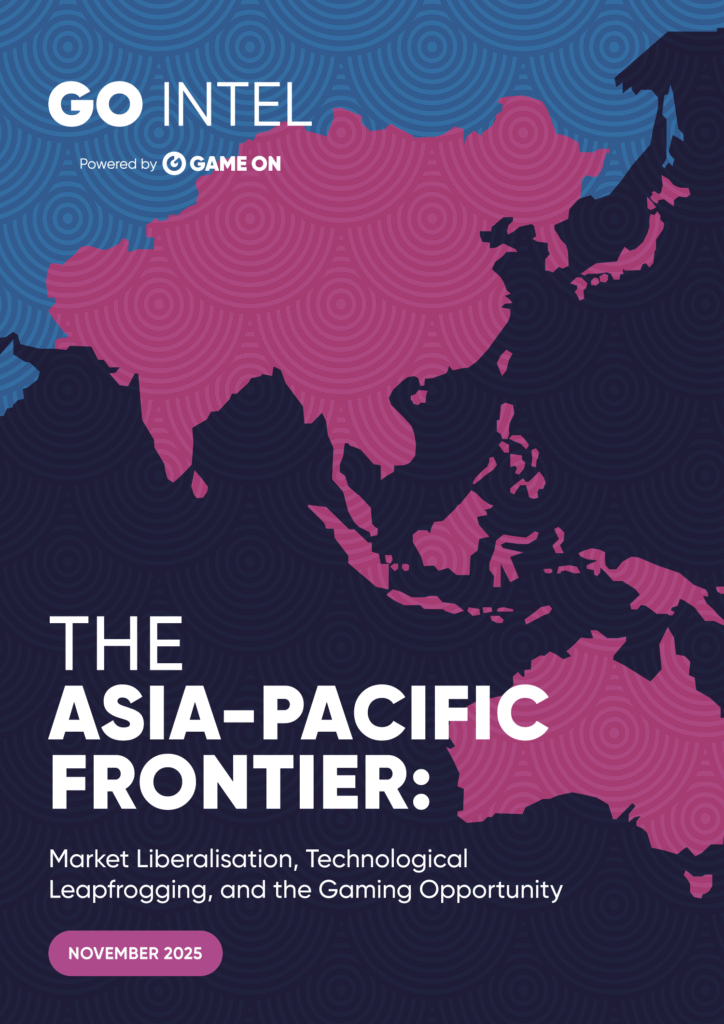The Asia-Pacific Frontier: Market Liberalisation, Technological Leapfrogging, and the Gaming Opportunity
Executive Summary
The Asia‑Pacific (APAC) region has emerged as the global engine room for iGaming and interactive gambling. As we head into 2025, this frontier encompasses over two‑thirds of the world’s population and includes some of the most digitally connected societies on Earth. Countries across South, East, Southeast Asia and Oceania combine youthful demographics, rapid mobile adoption and an appetite for gaming entertainment that far exceeds other regions. Yet the diversity of regulation, culture and economic development creates a complex mosaic. To capitalise on this opportunity, investors and operators must navigate a patchwork of legal frameworks ranging from fully liberalised licences in the Philippines to outright prohibitions in Indonesia and tight controls in Singapore. This report provides a detailed, evidence‑based assessment of APAC’s iGaming landscape in 2025, examining market size, growth drivers, consumer behaviour, regulatory trends and strategic opportunities.
Market size and growth – The Asia‑Pacific online gambling market is growing rapidly. According to Market Data Forecast, the regional market was valued at USD 18.53 billion in 2024 and is projected to reach USD 20.91 billion in 2025, with a compound annual growth rate (CAGR) of 12.77 % during 2025‑2033. Other industry sources report even higher figures; Altenar’s July 2025 briefing notes the market at USD 35.99 billion in 2023, projecting it to USD 72.81 billion by 2030. These variations reflect differences in methodology and the inclusion or exclusion of grey‑market wagering. Regardless of the precise estimates, consensus points to double‑digit growth across most markets, driven by digital adoption, rising disposable incomes and regulatory liberalisation.
Key drivers – Mobile connectivity is the foundation of APAC’s iGaming expansion. By early 2025, India alone counted 1.12 billion mobile connections, representing 76.6 % of its population, while Indonesia recorded 356 million mobile connections (125 % of its population). South and Southeast Asian countries often leapfrog fixed‑line infrastructure, going straight to mobile broadband; more than 92 % of India’s connections are 3G/4G/5G and over 96 % of Indonesian connections are broadband. Affordable smartphones, aggressive e‑wallet expansion and ubiquitous mobile data packages mean that more than 70 % of APAC online gamblers access platforms via mobile devices. Payment innovation further accelerates adoption: the Philippines is home to 73 million e‑wallet users, with adoption rates exceeding 87 %, while Indonesia leads Southeast Asia with 92 % of respondents using e‑wallets.
Regulatory patchwork – APAC’s regulatory landscape spans everything from liberal licensing regimes to outright bans. In the Philippines, the Philippine Amusement and Gaming Corporation (PAGCOR) licenses land‑based casinos and electronic gaming, generating ₱410.5 billion in gross gaming revenue (GGR) in 2024 and projecting ₱450‑480 billion in 2025. Macau remains the world’s largest land‑based casino hub; its six operators generated MOP 118.77 billion (USD 14.69 billion) in GGR during the first half of 2025 and maintain a 40 % effective tax rate. Thailand is moving towards legalisation: in 2024, the government approved legislation to permit casino complexes, and Citi estimates GGR could reach USD 9.1 billion when fully ramped. In contrast, Indonesia continues to prohibit all forms of gambling yet hosts an enormous unregulated market.
Market leaders and laggards – Macau, the Philippines, Singapore and Australia are APAC’s established gaming giants, collectively accounting for the majority of regulated casino GGR. South Korea’s 17 casinos recorded KRW 3.23 trillion (USD 2.30 billion) in GGR in 2024, while Japan’s pachinko industry – although legally considered amusement rather than gambling – still generated JPY 8.2 trillion (USD 53.1 billion) from pachinko machines in 2023. The Indian online gaming market is estimated at several billion dollars, but remains fragmented due to state‑level regulatory inconsistencies. Meanwhile, smaller emerging markets such as Vietnam, Cambodia and Sri Lanka are experimenting with regulated casinos targeting tourists.
Challenges and risks – Cultural attitudes towards gambling vary widely, particularly in predominantly Muslim countries like Indonesia, Malaysia and Bangladesh, where religious prohibitions shape policy. Grey‑market operators, payment fraud and responsible gambling concerns are pervasive. Many jurisdictions enforce stringent advertising restrictions, high tax rates or opaque licensing processes, constraining scale. Political risk is significant: for instance, the Philippines has ordered the phase‑out of Philippine Offshore Gaming Operators (POGOs), reflecting shifting governmental priorities.
Opportunities and outlook (2025‑2027) – Despite these challenges, APAC remains the most exciting frontier for iGaming. The region’s youthful demographics, deepening digital penetration and rising middle class will underpin continued expansion. Operators that localise content, integrate local payment methods and adopt robust compliance standards can capture an outsized share. We project the APAC iGaming market to grow at a compound annual rate of 10‑13 % between 2025 and 2027, with total GGR potentially exceeding USD 50 billion by 2027. Technological leapfrogging – from crypto payments to esports betting – will further disrupt traditional models. The next two years will test regulators’ willingness to embrace controlled liberalisation while balancing social concerns. Those markets that align regulation with innovation will reap significant fiscal and economic rewards.

